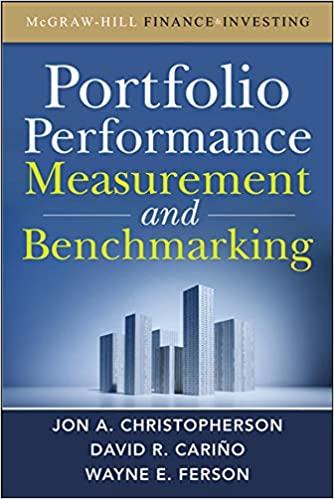Question
1. You have the following cash flows: Year 0 = -4,300, Year 1 = 2,500 Year 2 = 3,200, Year 3 = 4,000, Year 4
1.
You have the following cash flows: Year 0 = -4,300, Year 1 = 2,500 Year 2 = 3,200, Year 3 = 4,000, Year 4 = 6,000. Your discount rate is 10%. What is the Payback Period of this project?
2.
You are given an opportunity to invest $10,000 in a project with an expected cash flow of $3,000 per year for five years. Your discount rate based on risk is 11%. What is the IRR of this project?
3.
You have the following cash flows. Year 0 = -60,000, Year 1 = 15,000, Year 2 = 10,000, Year 3 = 7,000, Year 4 = -2,000, Year 5 = 10,000, Year 6 = 12,000, Year 7 = 4,000, Year 8 = 4,000, Year 9 = 4,000 and Year 10 = 1,000.
What is the NPV of this series of cash flows if your discount rate is 6%?
4.
You have the following cash flows: Year 0 = -600, Year 1 = 500 Year 2 = 100, Year 3 = 400, Year 4 = 550. Your discount rate is 8%. What is the Discounted Payback Period of this project?
5.
You have the following cash flows: Year 0 = -5,200, Year 1 = 1,700 Year 2 = 1,300, Year 3 = 1,300, Year 4 = 1,500. Your discount rate is 10%. What is the IRR of this project?
Step by Step Solution
There are 3 Steps involved in it
Step: 1

Get Instant Access to Expert-Tailored Solutions
See step-by-step solutions with expert insights and AI powered tools for academic success
Step: 2

Step: 3

Ace Your Homework with AI
Get the answers you need in no time with our AI-driven, step-by-step assistance
Get Started


